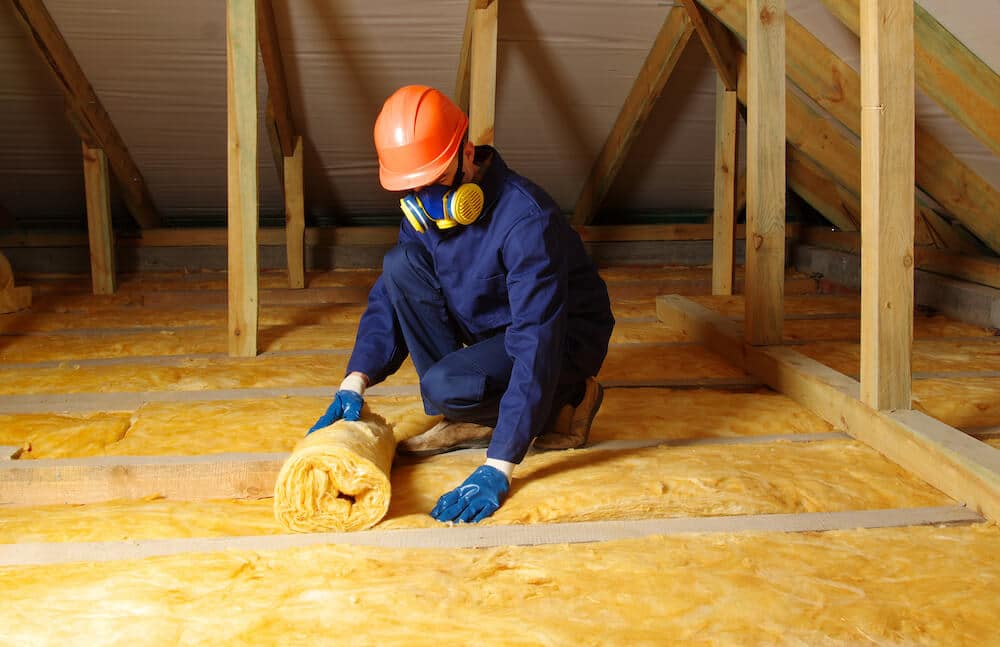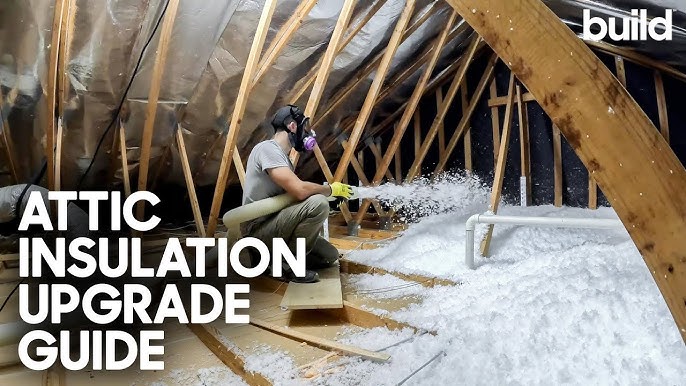How Attic Insulation DFW Can Change Your Home's Climate Control
How Attic Insulation DFW Can Change Your Home's Climate Control
Blog Article
Discover the Various Sorts Of Attic Insulation and Their Special Benefits for Your Home's Power Performance

Fiberglass Insulation
Fiberglass insulation is one of one of the most commonly used products for attic room insulation because of its exceptional thermal efficiency and cost-effectiveness. Composed of small glass fibers, this product efficiently traps air, producing a protecting barrier that aids maintain constant indoor temperatures. Its high R-value per inch makes it specifically effective at withstanding warm transfer, which is important for power preservation in homes.
Installment of fiberglass insulation is reasonably simple, usually offered in batts or loose-fill kinds, fitting different attic configurations. Furthermore, it is resistant and non-combustible to wetness, decreasing the threat of mold and mildew growth. This sturdiness adds to its longevity, making fiberglass a practical lasting financial investment for property owners.
In addition, fiberglass insulation is frequently produced from recycled products, which enhances its eco-friendliness. The material can likewise add to soundproofing, lessening sound transfer in between areas. While it is vital to put on safety gear during installment to avoid inflammation from the fibers, the overall advantages of fiberglass insulation, including energy cost savings and environmental factors to consider, make it a popular choice for enhancing attic room performance and promoting a comfortable living atmosphere.
Spray Foam Insulation
Spray foam insulation is an extremely efficient choice for attic insulation, recognized for its premium air securing and thermal performance. This ingenious insulation product is composed of a combination of isocyanate and polyol material, which, when integrated, broadens swiftly to fill up voids and tooth cavities in the attic room. Its ability to stick to different surfaces ensures a constant obstacle against air leakages, considerably minimizing warm loss throughout cooler months and warm gain during warmer seasons.
Among the key benefits of spray foam insulation is its high R-value per inch, which means it gives superb thermal resistance in a fairly thin application. This is specifically beneficial in attic rooms where room is typically restricted. In addition, spray foam can help reduce dampness buildup, reducing the threat of mold and mildew and mildew growth, which can be detrimental to both the framework and interior air top quality.
While the initial price of spray foam insulation may be more than traditional alternatives, its long-lasting energy financial savings, combined with raised convenience and improved home value, make it a beneficial financial investment for house owners looking for improved power effectiveness. Attic Insulation DFW. Overall, spray foam insulation attracts attention as an efficient solution for maximizing attic room insulation
Cellulose Insulation

Cellulose insulation is a prominent choice for attic insulation, primarily composed of recycled paper products treated with fire retardants. This eco-friendly option Visit Website is recognized for its superb thermal performance, successfully minimizing warm transfer in both summer and winter season months. The dense structure of cellulose enables it to load spaces and spaces in attic room spaces, offering a seamless barrier versus air leaks.
One of the significant advantages of cellulose insulation is its capability to stand up to mold and bugs, owing to the fire retardant therapies used during production. Additionally, it flaunts a high R-value per inch, which converts into exceptional energy efficiency. Homeowners can expect reduced heating & cooling costs as an outcome of boosted insulation.
Installation is generally completed with blowing loose cellulose right into the preferred area, permitting a efficient and quick process. This method also decreases disruption to the existing structure. Moreover, cellulose insulation has a fairly reduced environmental impact, as its manufacturing process makes use of recycled products, adding to lasting building techniques.
Rock Woollen Insulation
Among the various alternatives for attic room insulation, rock wool, likewise understood as mineral wool, sticks out due to its remarkable thermal and acoustic performance. Made from recycled or natural materials, rock woollen is developed by thawing rock and spinning it into fibers, resulting in an item that provides excellent insulation residential properties.
One of the significant advantages of rock wool insulation is its high Check This Out R-value, which indicates its effectiveness in standing up to heat flow. This characteristic not only improves energy performance but also adds to maintaining a comfy interior temperature level year-round. Furthermore, rock woollen is inherently fire-resistant, making it a safer alternative for homes as it can hold up against heats without melting or launching poisonous fumes.
Moreover, rock wool insulation succeeds in soundproofing capabilities, effectively reducing sound transmission between spaces and from outside resources. Overall, rock woollen insulation offers an extensive solution for enhancing energy efficiency, safety, and comfort in household settings.
Glowing Obstacle Insulation
Radiant obstacle insulation functions as an effective remedy for minimizing heat transfer in attic rooms, specifically in warmer climates. This sort of insulation jobs by reflecting induction heat far from living spaces, therefore reducing the amount of warmth that enters a home throughout hot weather condition - Attic Insulation DFW. Commonly made up of an extremely reflective material, such as aluminum foil, glowing barriers are set up in attic rooms, encountering the roof covering, where they can intercept incoming warm from the sunlight
The key advantage of glowing barrier insulation is its ability to reduced air conditioning prices. By showing heat instead than absorbing it, radiant obstacles can assist preserve a much more secure interior temperature, lowering the workload on a/c systems. This efficiency equates into lower power expenses and raised comfort for property owners.
Along with energy financial savings, radiant obstacles can likewise add to enhanced interior air top quality. By minimizing warmth buildup, they aid decrease humidity levels, which can prevent mold growth and enhance total air blood circulation. When installed correctly, radiant barrier insulation can be a vital enhancement to any type of energy-efficient home, making it a worthwhile factor to consider for homeowners seeking to improve their attic insulation technique.
Conclusion
To conclude, comprehending the numerous kinds of attic room insulation-- fiberglass, spray foam, cellulose, rock wool, and radiant obstacles-- enables house owners to make educated decisions relating to explanation energy efficiency. Each insulation type presents one-of-a-kind advantages, such as premium thermal resistance, moisture administration, and audio attenuation. By picking the suitable insulation product, significant reductions in energy costs can be accomplished, together with improvements in interior comfort. Eventually, the best choice contributes to an extra sustainable living setting and promotes overall power preservation.

In verdict, recognizing the different types of attic room insulation-- fiberglass, spray foam, cellulose, rock woollen, and glowing obstacles-- makes it possible for home owners to make informed decisions concerning power efficiency.
Report this page